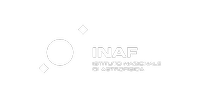ACME - Astrophysics Center for Multimessenger studies in Europe
Abstract: ACME (the Astrophysics Centre for Multi-messenger studies in Europe) addresses the EC Call to provide wider, simplified, and more efficient access to the best research infrastructures (RI) available to researchers in the astronomy and astroparticle physics communities.
ACME is set up to realize an ambitious coordinated European-wide optimization of the accessibility and cohesion between multiple leading RI, offering access to instruments, data and expertise, focused on the new science of multi-messenger astrophysics. ACME will forge a basis for strengthened long-term collaboration between these RI irrespective of location. Collaboration and user training will be specifically aimed at levelling up access opportunities across Europe and beyond. ACME objectives are: - implement the European roadmaps’ recommendations and act as a pathfinder to broaden, improve and align access to the respective RI services and data, and assess and evaluate new models for better coordination and provision of at-scale services - provide harmonized and inclusive trans-national and virtual access to world-class RI - develop centres of expertise providing expert support to enable easier access for more researchers - improve science data products management to facilitate both focused research goals and serendipitous discoveries, implementing FAIR approaches to broaden access - improve interoperable systems for rapid identification of astrophysical candidate events, and alert distribution to the network of RI and scientific consortia to optimize follow-up observations - provide training for a new and broader generation of scientists and engineers - open the astrophysics and astroparticle physics data sets to other disciplines, such as environmental studies or marine biology for the undersea neutrino facilities and increase citizen engagement in scientific research.
 ACME has received funding from the European Union's Horizon Europe research and innovation programme under grant agreement No 101131928.
ACME has received funding from the European Union's Horizon Europe research and innovation programme under grant agreement No 101131928.
Dettagli tecnici
PI: Silvia Piranomonte
Struttura INAF: OA Roma
Bando: HORIZON-INFRA-2023-SERV-01
Riferimento contratto n. 101131928
Inizio: 01/09/2024
Durata: 48 mesi
Coordinamento: CNRS (FR)
Partners:
|
UCLouvain (BE) |
MPG (DE) |
CEA (FR) |
NCBJ (PL) |
|
UNIMAN (UK) |
GSSI (IT) |
UNIGE (CH) |
JIV-ERIC (NL) |
|
FAU (DE) |
IFAE-CERCA (ES) |
OU (UK) |
BUW (DE) |
|
NOA (EL) |
EGO (IT) |
KIT (DE) |
LMU MUENCHEN (DE) |
|
NWO-I (NL) |
UCAM (UK) |
UU (SE) |
LOFAR ERIC (NL) |
|
IRAM (FR) |
INFN (IT) |
USC (ES) |
UBER (DE) |
|
CNIG (ES) |
CTAO GGMBH (DE) |
QUB (IE) |
UMK (PL) |
|
AALTO (FI) |
EPFL (CH) |
AUTH (EL) |
TSNUK (UA) |
|
IRA NASU (UA) |
|
|
|

